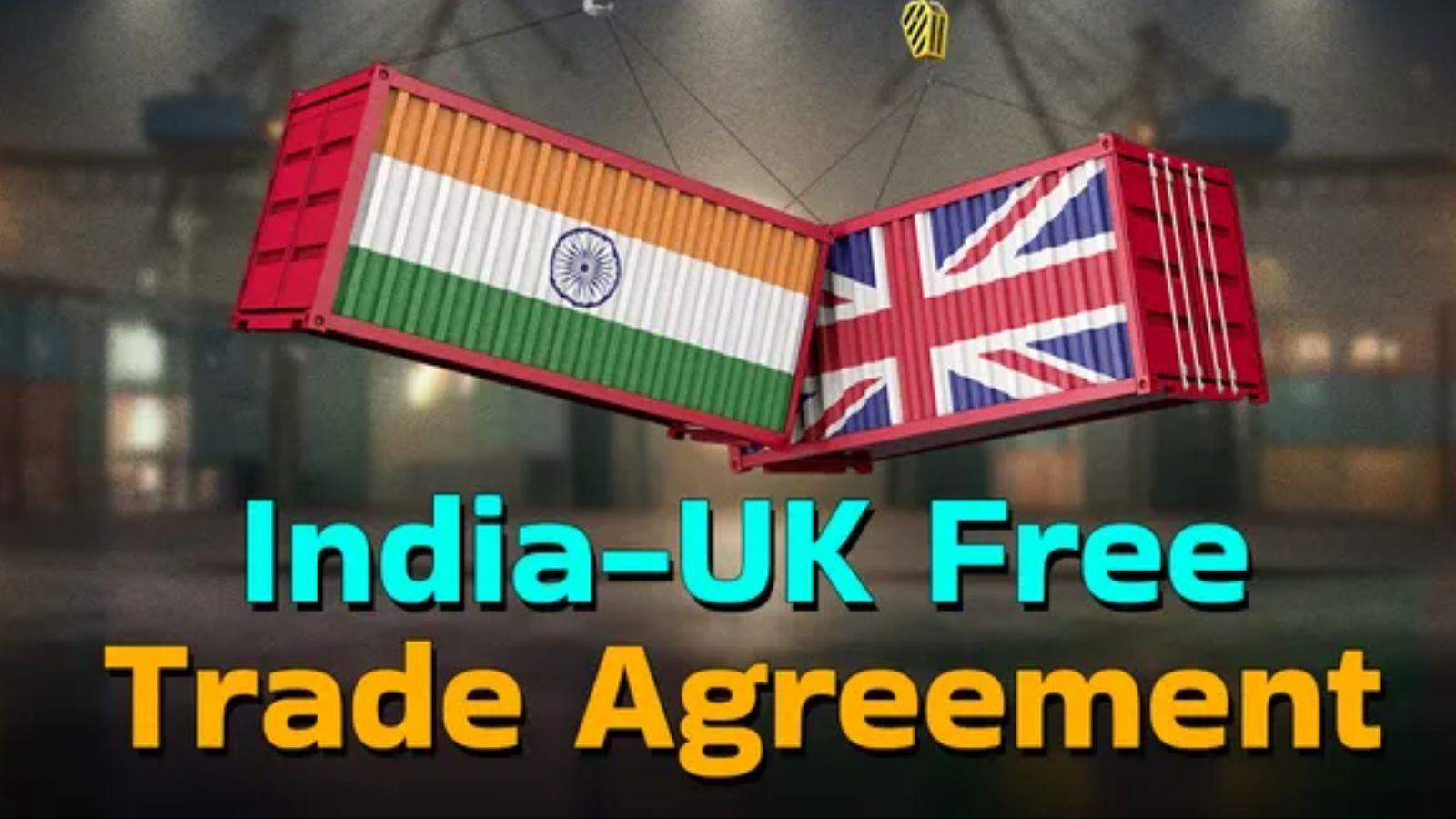India‑UK Trade Deal Explained: Key Benefits & Changes
It was on 24 th July 2025 when India and the UK signed a historic Comprehensive Economic and Trade Agreement (CETA) that is bound to transform mutual trade relations and improve their growth.
It was on 24 th July 2025 when India and the UK signed a historic Comprehensive Economic and Trade Agreement (CETA) that is bound to transform mutual trade relations and improve their growth.
It was touted by officials on both sides as the most important bilateral trade agreement since Brexit with important implications not only to businesses but also consumers.

| Sector | Benefit for India | Benefit for UK |
| Textiles & Apparel | Zero duty boosts exports from Tiruppur, Surat, Ludhiana | New UK textile products can enter India with lower costs |
| Marine Products & Spices | Duty‑free access opens strong seafood export growth (70% increase expected) | — |
| Leather & Footwear | Tariff removal helps MSMEs in Kanpur, Agra, Chennai | UK manufacturers of premium footwear gain access |
| Auto Components & EVs | Increased access for Tata, Mahindra; zero duty on exports | British carmakers enter India under quota at 10% tariff |
| Gems & Jewellery | Near-zero duty access helps Surat, Gujarat exporters | British luxury jewellery more accessible in India |
| Pharmaceuticals & Medical Devices | Duty removal benefits Indian generic manufacturers | UK exporters in medical tech get wider Indian market access |
The deal will come into force within the next 6–12 months, after approvals from both Indian and UK legislatures and implementation of key regulatory steps.
The India–UK CETA trade deal is a major milestone that promises to reshape bilateral commerce. With sweeping tariff reductions, new access to service markets, and streamlined mobility for professionals, it boosts opportunities on both sides. While risks remain—such as compliance burdens and carbon tax disputes—the agreement’s benefits appear significant for Indian exporters, MSMEs, professionals, and UK businesses alike.
Stay tuned as CETA moves through ratification and begins changing markets across sectors from textiles and seafood to engineering, pharma, and professional services.
Q1: Will Indian textiles be duty-free in the UK?
Yes—99% of Indian exports, including textiles, will enter the UK duty-free, increasing competitiveness for Indian MSMEs.
Q2: How much will whisky tariffs drop in India?
From 150% to 75% immediately, and further down to 40% over the next 10 years.
Q3: Can Indian professionals work in the UK without social security taxes?
Yes—for up to three years under the Double Contribution Convention.
Q4: Will UK firms get access to Indian government contracts?
Yes—UK companies can bid on non-sensitive central government contracts worth over ₹2 billion each, via platforms like GeM.

The property, complete with 30-seat screening from room, a 100-seat amphitheater and a swimming pond with sandy shower…

The property, complete with 30-seat screening from room, a 100-seat amphitheater and a swimming pond with sandy shower…

The property, complete with 30-seat screening from room, a 100-seat amphitheater and a swimming pond with sandy shower…